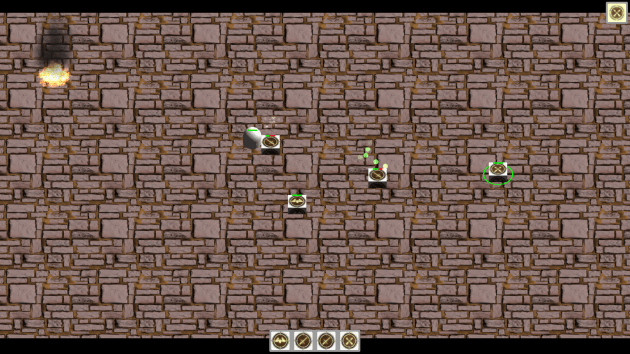Advanced Game Projects
January 30, 2015 1 Comment
In the USC Games program (which spans a number of majors and schools), we have annual process that falls under the moniker of Advanced Game Projects, or AGPs. This process involves a student-assembled and student-lead team building a game in a roughly 10 month development cycle. I’m excited that this process exists.

Bloom, an AGP from a previous year.
It starts with a pitch process in the Spring semester, currently consisting of three phases: a paper proposal, submission of a prototype, and finally a live pitch sessions with a board of judges. Games that pass successfully through the pitch process get slated for development the following year. A student lead (who presumably came up with the idea, assembled a small team for the pitch, and is generally the main driver behind the project) begins to recruit a large team and pound out pre-production design over the Summer.
In the Fall, most people on an AGP team register for the associated class, which gives time to meet and talk with mentors from the industry about the management problems that have cropped up. Because working on an AGP is a requirement of my major, there is always a pool of student talent for teams to pick up. This results in AGP teams that can range anywhere from 20 to 40 people. Needless to say, this is a huge undertaking and an incredible responsibility for the team lead.
However, by Demo Day in the Spring, the team will have (hopefully) created a relatively well-polished game, albeit generally small in scope. The games are displayed at Demo Day, and not only do students attend and sample the various AGPs, but industry professionals are present as well. So AGPs are a great opportunity for networking with professionals and finding mentors, as well as landing a big, fat, good-looking game in your portfolio.
I have an ambition to lead an AGP in my sophomore or junior year, but in the mean time I’ve hopped on board with an AGP that plans to pitch later this Spring. Being present from the start of the process and being able to talk with the team lead gives great insight. Even if the AGP doesn’t make it past the pitching process, I’ve learned a lot about do’s and dont’s of assembling and running a team, as well as formulating and developing an idea into a pitchable game.
The idea we are pitching is for a humorous single-player side-scrolling multi-character action-adventure role-playing hack-and-slash, or more basically, Castle Crashers meets Dawn of War 2. Or something.

A screenshot from our latest prototype.
The eternal struggle is a combination of scope and pushing the game in a direction that is likely to pass the pitch process. You see, certain types of games tend to be favored; the faculty making the decision explicitly point this out. Games that focus on pushing the boundaries of technology, implement rare or radical gameplay concepts, are socially progressive, or take risks and target uncommon platforms are generally selected over games that try to put a small spin on a well-worn concept, or aim to execute a tried-and-true concept especially well.
This difficulty is compounded by an ultimate lack of direction with our current concept (at least in my mind). The takeaway is that a game concept should be centralized around a single, appealing idea. Hearing that concept should instantly spark at vivid image in your mind, and should either inspire you to work on the project or play the game. This is why iterating on an existing idea is less appealing. In addition, if you find yourself searching for material to fill out your game with, the core concept probably isn’t strong enough. The feel or driving mechanic (whatever makes your game sound good in the first place) should spawn a myriad of possible directions. Thinking hard about what to cut out of your idea is a good position to be in; thinking hard about what would be a good thing to put in is not.
Maybe this seems counter-intuitive, or vague and unhelpful. Let me give you an example by explaining one of the concepts that I might potentially develop into a pitchable AGP.
I actually described this in a previous post. Basically, the player struggles to keep their third world country afloat, and build up. I like to describe it as Banished crossed with Civilization. The player experience goal is something along the lines of “after struggling to balance a myriad of factors based on real-life, players gain a new appreciation for the difficulties faced by distant and otherwise foreign places.”
As you can see, I would be approaching the game from a social-awareness / global education standpoint. Like KSP teaches players physics, this game would teach players the difficulties of third-world politics. Of course, the game is also a technical and design challenge. Technically, building a simulation with enough fidelity that also performs well would be hard. Creating challenging AI opponents would also be interesting. Design-wise, the game needs a fun yet realistic interplay of economics, politics, and sociology, which is a design direction I doubt many AGPs have pursued. This sort of novelty would be appealing to the pitch process, I imagine.
However, my plans continue to evolve as I watch the process unfold. If all goes according to plan, I’ll pitch next year.